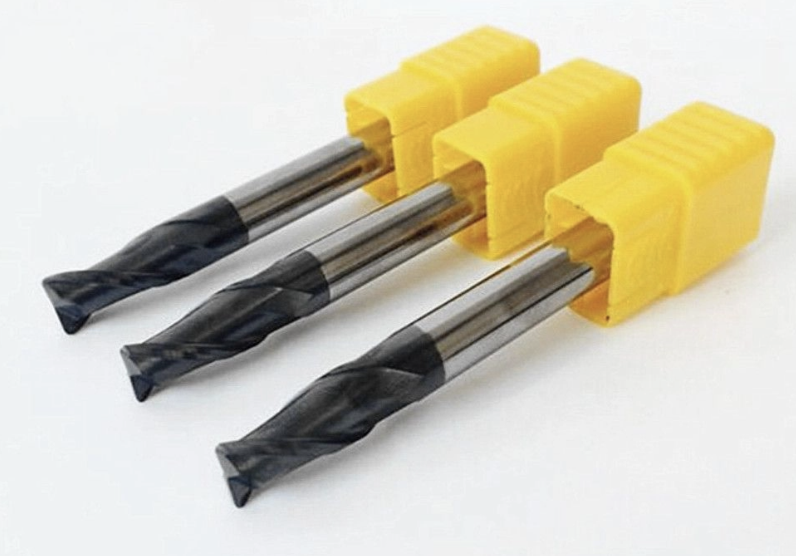Choosing the Right External Radius End Mill
# Choosing the Right External Radius End Mill
In the intricate domain of precision machining, the selection of appropriate tooling is paramount to achieving the desired outcomes, both in terms of component accuracy and surface finish. The external radius end mill, a quintessential tool in the machinist's arsenal, warrants meticulous consideration due to its profound influence on the machining process.
Understanding the External Radius End Mill

An external radius end mill is a specialized cutting tool designed to impart a rounded edge or contour on the exterior of a workpiece. This tool is distinguishable by its hemispherical cutting profile, which facilitates the creation of smooth, arcuate transitions on the workpiece edges. The tool's geometry is pivotal in determining the quality of the surface finish and the dimensional accuracy of the machined part.
The Importance of Radius in End Mills
The radius of an end mill is a critical parameter that dictates the tool's cutting characteristics. A larger radius tends to produce a smoother surface finish and reduces the stress concentrations on the machined part, thereby enhancing its fatigue resistance. Conversely, a smaller radius allows for sharper transitions and is beneficial in intricate detailing where precision is paramount.
The selection of the end mill radius necessitates a comprehensive understanding of the workpiece material, the desired surface finish, and the specific application requirements. The interplay between these factors determines the optimal radius that will yield the best machining results.
Factors Influencing the Selection of an External Radius End Mill
Material Considerations
The machinability of the workpiece material is a primary consideration in selecting the appropriate external radius end mill. Materials with high hardness or toughness, such as stainless steel or titanium alloys, require end mills with enhanced wear resistance and toughness. Carbide end mills are typically preferred for such applications due to their superior hardness and thermal resistance.
For softer materials, such as aluminum or plastics, high-speed steel (HSS) end mills may suffice. The tool's composition must be compatible with the workpiece material to ensure efficient material removal and prolong tool life.
Tool Geometry and Coatings
The geometry of the end mill, including its helix angle, number of flutes, and overall design, significantly impacts its cutting performance. A higher helix angle can improve surface finish by promoting smoother cutting action and reducing vibration. The number of flutes influences the chip removal rate and surface finish; fewer flutes provide larger chip spaces, beneficial for softer materials, whereas more flutes offer finer finishes for harder materials.
Coatings such as titanium nitride (TiN), titanium carbonitride (TiCN), or aluminum titanium nitride (AlTiN) can enhance tool performance by reducing friction, increasing wear resistance, and improving thermal stability. The choice of coating should align with the workpiece material and the specific machining conditions.
Machining Parameters
The external radius end mill must be selected in conjunction with the appropriate machining parameters, including spindle speed, feed rate, and depth of cut. These parameters are intrinsically linked to the tool's geometry and the workpiece material, necessitating a holistic approach to tool selection.
A tool with an inappropriate radius may necessitate compensatory adjustments to the machining parameters, potentially compromising the process efficiency and the quality of the final product.
Best Practices in Using External Radius End Mills
Precision and Calibration
The precision of the external radius end mill is paramount in achieving the desired outcomes. Regular calibration and inspection of the tool are essential to maintain its cutting accuracy and effectiveness. Utilizing advanced metrology equipment can aid in verifying the tool's dimensions and ensuring its conformity with the specified tolerances.
Tool Maintenance and Longevity
Proper tool maintenance is critical in extending the life of the external radius end mill. This includes regular cleaning to remove built-up material, timely re-sharpening, and appropriate storage to prevent corrosion and damage.
Technological Integration
Incorporating technological advancements such as computer numerical control (CNC) systems and computer-aided design (CAD) software can enhance the efficacy of external radius end mills. These technologies facilitate precise tool path planning and real-time adjustments, optimizing the machining process and improving the quality of the finished product.
Conclusion
The selection of an external radius end mill is a complex process that necessitates a thorough understanding of the machining requirements, workpiece material, and tool characteristics. By considering factors such as tool material, geometry, coatings, and machining parameters, machinists can achieve superior results in terms of both surface finish and dimensional accuracy.
In a domain where precision and quality are paramount, the judicious selection and application of an external radius end mill can significantly enhance the machining process, ensuring that the final product meets the stringent standards of modern manufacturing.
The integration of technological tools and adherence to best practices in tool maintenance further contribute to the optimal performance and longevity of the external radius end mill, underscoring its indispensable role in precision machining.
Thank you for reading our blog! We’re proud to offer premium carbide cutting tools tailored to your machining requirements. Our product range includes square end mills, ball nose end mills, corner radius end mills, aluminum-specific tools, and more.
Why Choose Us?
• Superior Quality: Rigorously tested for durability and precision.
• Custom Solutions: Tailored tools for unique machining needs.
• Fast Delivery: Ample stock to meet urgent demands.
• Technical Support: Expert advice for optimal cutting performance.
Email: sale03@hiboo-tool.com
Website: www.hiboo-tools.com
English
العربية
Français
Русский
Español
Português
Deutsch
italiano
日本語
한국어
Nederlands
Tiếng Việt
ไทย
Polski
Türkçe
ພາສາລາວ
ភាសាខ្មែរ
Bahasa Melayu
ဗမာစာ
Filipino
Bahasa Indonesia
magyar
Română
Čeština
Монгол
қазақ
Српски
हिन्दी
فارسی
Slovenčina
Slovenščina
Norsk
Svenska
українська
Ελληνικά
Suomi
Հայերեն
עברית
Latine
Dansk
বাংলা
Hrvatski
Gaeilge
Oʻzbekcha
latviešu
Беларуская мова
Български
Lietuvių
Gaelo Albannach
ئۇيغۇرچە
Cymraeg


















